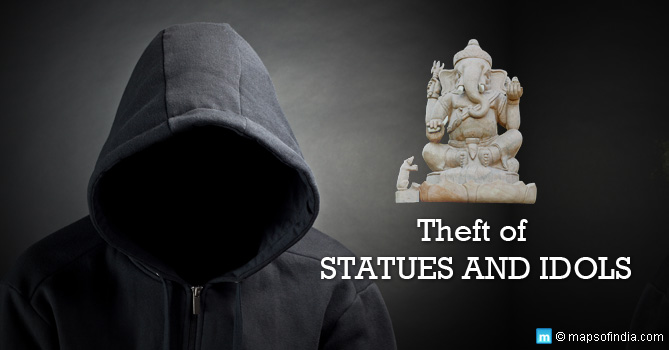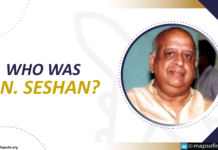World Heritage Day
Today is World Heritage Day (18 April). On 18 April 1982, the International Council on Monuments and Sites (ICOMOS) had organised a symposium and proposed that the day be celebrated across the world to honour the ancient monuments and sites that uphold mankind’s rich tradition of culture and beauty. The ICOMOS suggested that 18 April be celebrated as “International Day for Monuments and Sites in all nations. In 1983, the UNESCO General Conference approved of the idea and recommended that its members declare the day “World Heritage Day”.
Currently, India has 32 cultural and natural sites which have been listed by the UNESCO as World Heritage Sites. There are some 46 other sites in our country that the organisation has added to its tentative list and the government is keen on seeing many of these getting listed soon. The entries on UNESCO’s tentative list include the Bahá’í House of Worship in New Delhi, Sri Harmandir Sahib (Golden Temple) in Amristar, the Mughal Gardens in Kashmir, Santiniketan in West Bengal, and the ancient Buddhist centre in Sarnath.
Bring Our Gods Home
While each country is busy celebrating World Heritage Day in different ways, Indians took to Twitter to express their thoughts on World Heritage Day. Since early this morning, #BringOurGodsHome has been trending on the microblogging site. The hashtag, derived from Chronicles 13:3 “Let us bring the ark of our God back to us”, is a reference to systemic theft of India’s statues, idols, and other artefacts in modern times. Over the past few months, India has been witnessing a silent but a strong protest against the theft of the nation’s rich heritage and cultural icons which end up in auction houses and private collections abroad. Not only have Twitter users from India been outraging about the illicit sale of Indian idols and artefacts, many have also been posting pictures of Indian art relics in popular museums and displays abroad.
A couple of months back, in February 2015, writer Sanjeev Sanyal wrote a blogpost in Economic Times, “According to experts, around 20,000 idols, sculptures and other antiquities have been stolen and sold in foreign countries since 1980. This excludes colonial-era loot. The estimated market value of these antiquities is over $10 billion, although many of these artefacts are priceless from a cultural perspective”.
India Pride Project
In their tweets, the Twitterati made references to the India Pride Project (IPP) – an enterprise or a body founded a few years ago by volunteers who are passionate about restoring India’s stolen antiques and artistic heritage. Initially, the co-founders decided to remain anonymous while at the same time working doggedly to prompt art collectors, museums and art establishments, and even governments to reclaim stolen Indian art pieces. It was only in 2015, that two of the founders, Anuraag Saxena and Vijay Kumar decided to come out of the shadow of anonymity and made their work public.
Apart from investigating and researching about Indian art and artefacts, the India Pride Project has compelled many foreign entities to return India’s treasures while at the same time creating a great deal of awareness about this illegal trade.
Recent Successes
Much of the India Pride Project’s work has remained under wraps. The success claimed by India, however, has remained firmly in the headlines.
- Vijay, an IPP co-founder, discovered that an ancient Nataraja idol, the presiding deity of the Sripurantthan Temple in Tamil Nadu was on display at the National Museum of Australia. The group worked hard at raising awareness about this idol. Finally, in 2014, Australian PM came to India and brought back the Nataraja idol. He handed it over to the Indian PM Narendra Modi as a gesture of goodwill.
- The same year, the Toledo Museum of Art (Ohio, USA) decided to return a 1,000-year-old bronze idol of Ganesha to India. The idol was among a stash sold to the museum by a smuggling ring.
- Later, in April 2015, the Prime Minister of Canada Stephen Harper returned a 900-year-old “Lady Parrot” sculpture, originally belonging to the Khajuraho temple complex which had found its way into Canada. He handed the heritage piece to PM Modi when he visited Ottawa.
- Yet another success came when the German Chancellor Angela Merkel returned a 10th-century Durga idol, originally from a temple in Kashmir, to PM Modi. The idol had “gone missing” for over two decades and was found at the Linden Museum in Stuttgart.
Despite these success stories, it is estimated that some 70,000 smuggled idols and artefacts are still missing from India and the Indian government and groups such as the IPP are working hard to bring them back.
The Political Angle
Like most other stories on Twitter, the #BringOurGodsHome campaign has also taken a poignantly political turn. Most critics of the Indian National Congress party are now accusing the leading family (particularly Sonia Gandhi) of being involved in major smuggling activities and exporting Indian idols and artefacts illegally. Not much evidence has been furnished to support such an allegation, though. It is, however, clear that the current government is making commendable efforts to restore the smuggled icons of India’s heritage and cultural legacy.




